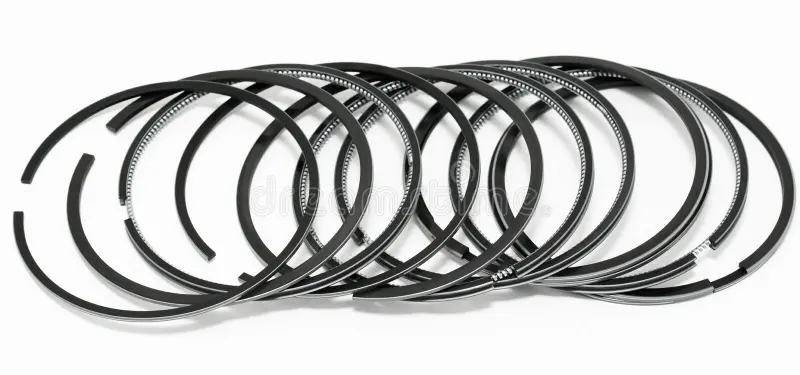Piston Rings

Function of Piston Rings
Piston rings are split metal rings that fit into grooves machined on the circumference of the piston. They play several essential roles in an internal combustion engine:
- Sealing the combustion chamber: The top ring (compression ring) prevents high-pressure combustion gases from escaping from the combustion chamber into the crankcase.
- Compression control: The second ring (wiper ring or intermediate compression ring) also helps with sealing and scrapes excess oil from the cylinder wall.
- Oil scraping: The bottom ring (oil control ring) is designed to scrape excess oil from the cylinder walls and return it to the crankcase, preventing oil from entering the combustion chamber and being burned.
- Heat transfer: The rings help transfer heat from the piston to the cylinder walls, which are cooled by the coolant.
Maintenance and Wear Signs of Piston Rings
Piston rings wear out over time due to constant friction and high temperatures.
Maintenance Tips:
- Use good quality engine oil and adhere to oil change intervals. Poor lubrication accelerates wear.
- Ensure proper functioning of the cooling system to avoid engine overheating.
- Avoid excessive engine speeds, especially when cold.
Common Wear Signs:
- Excessive engine oil consumption: If the oil control ring is worn, oil enters the combustion chamber and is burned, resulting in blue smoke from the exhaust.
- Loss of compression and power: Worn compression rings can no longer ensure a perfect seal, leading to a drop in compression and thus a loss of performance.
- Blue smoke from the exhaust: Indicates that engine oil is being burned.
- Increased crankcase pressure (blow-by): Combustion gases escape more easily into the crankcase.
- Fouled spark plugs: Due to oil combustion.
Replacing piston rings is a major engine operation that often requires significant disassembly. It is crucial to use quality rings and respect assembly tolerances. Konipa offers suitable ring sets to restore your engine's performance.
